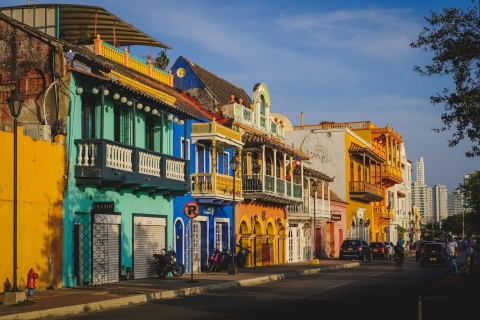Los Riscos, Chile - Weather and Climate
The temperature in Los Riscos, Los Lagos, Chile varies moderately throughout the year.
Temperatures shift from pleasant
to cold as the months go by.
It also has a relatively rainy climate with high levels of precipitation.
Let’s explore the climate details to provide you with a complete overview.
Average maximum day and minimum night temperature
In Los Riscos, seasonal changes bring about a moderate variation in temperatures. On average, daytime temperatures range from a pleasant 20°C in February to a chilly 10°C in July.
Nighttime temperatures can drop, with average lows reaching 5°C in July.Check out our detailed temperature page for more information.
Temperature ranges by month
Precipitation and rainy days
Los Riscos has a relatively rainy climate with high precipitation levels, averaging 3581 mm of rainfall annually. The seasons in Los Riscos, bring significant changes in precipitation. The wettest month, June, receives heavy rainfall, with an average of 490 mm of precipitation. This rainfall is distributed across 12 rainy days.
In contrast, the driest month, January, experiences much less rainfall, totaling 168 mm over 3 rainy days. These distinct seasonal differences provide diverse experiences throughout the year. For more details, please visit our Los Riscos Precipitation page.The mean monthly precipitation over the year, including rain, hail and snow
Sunshine over the year
In Los Riscos, summer days are longer and more sunny, with daily sunshine hours peaking at 7.0 hours in January. As the darker season arrives, the brightness of the sun becomes less. June sees a soft sun for only 1.9 hours per average day.
Visit our detailed sunshine hours page for more information.
Monthly hours of sunshine
Daily hours of sunshine
Average humidity
The city experiences its highest humidity in June, reaching 90%. In December, the humidity drops to its lowest level at 79%. What does this mean? Read our detailed page on humidity levels for further details.
Relative humidity over the year
Forecast for Los Riscos



Select a Month of Interest
Check the conditions for any month of the year.
The best time of year to visit Los Riscos in Chile
The average rainfall figures in Los Riscos are quite high. Throughout the year, you have a chance of prolonged precipitation. So no matter what time of year you go, you will always have to deal with a high number of rainy days. This makes it more challenging to point out the best time of year to visit. If we needed to pick one month we would choose January which is the sunniest month of the year.Other facts from our historical weather data:
February has an average maximum temperature of 20°C and is the warmest month of the year.
The coldest month is July with an average maximum temperature of 10°C.
June tops the wettest month list with 490 mm of rainfall.
January is the driest month with 168 mm of precipitation.
January is the sunniest month with an average of 210 hours of sunshine.
No idea where to travel to this year? We have a tool that recommends destinations based on your ideal conditions. Find out where to go with our weather planner.



